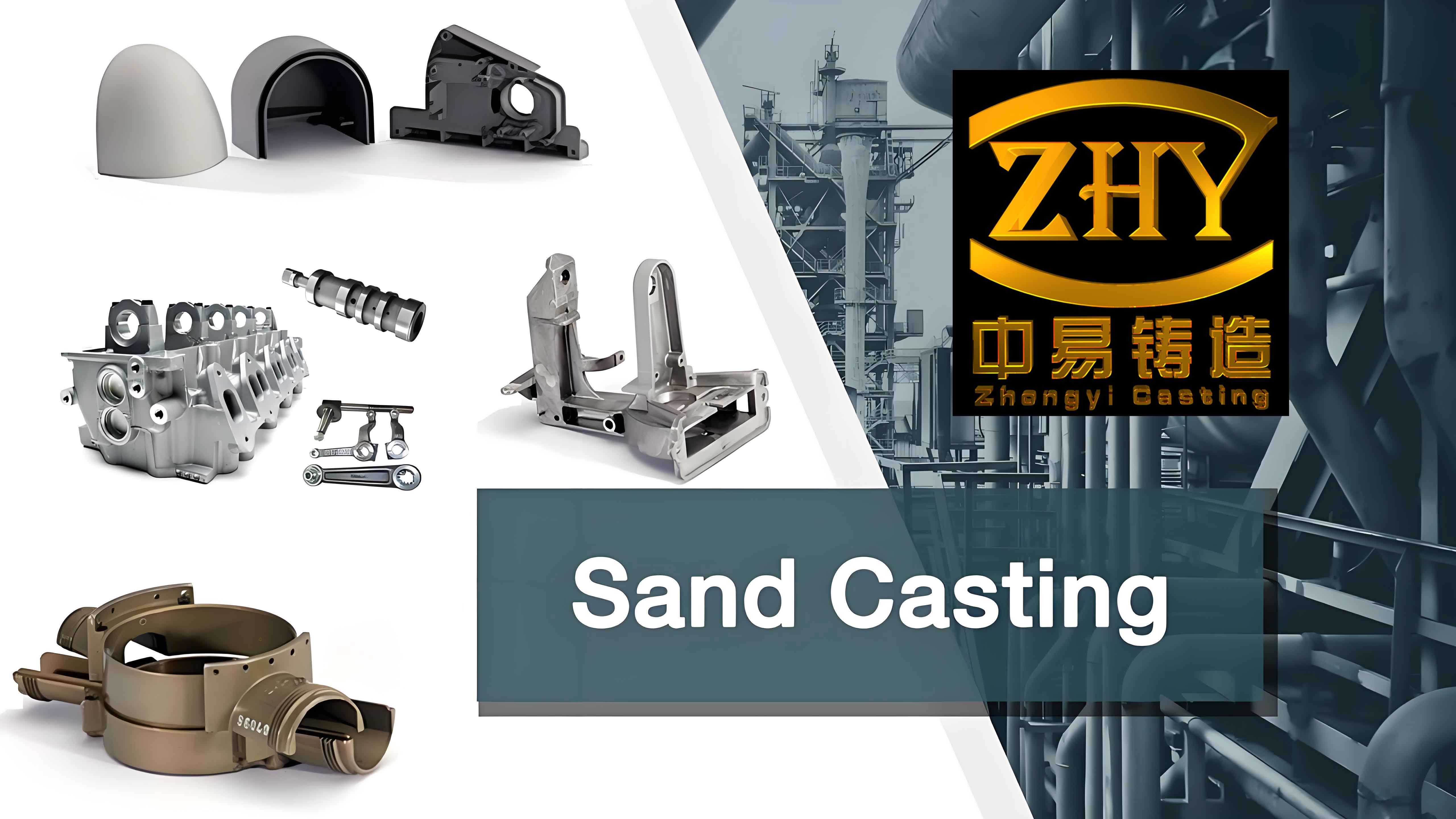
1. Introduction to Sand Casting Parts and Quality Challenges
Sand casting remains one of the most widely used manufacturing processes globally, accounting for over 70% of all casting production. Its versatility in producing sand casting parts of varying sizes, shapes, and materials—such as cast iron, steel, and aluminum alloys—makes it indispensable in industries like aerospace, automotive, and heavy machinery. However, the complexity of modern sand casting parts introduces significant quality control challenges. Defects like cold shuts, porosity, sand inclusions, and shrinkage cavities often arise due to intricate geometries, coupled with nonlinear interactions between process parameters (e.g., pouring temperature, mold compaction) and structural features.
Traditional quality assurance methods, which rely heavily on manual inspections and trial-and-error adjustments, struggle to address these issues. Moreover, the unstructured nature of 3D models of sand casting parts complicates quantitative analysis, leaving critical relationships between part morphology and defect formation unexplored. To overcome these limitations, we propose a data-driven framework that integrates multi-source heterogeneous data—combining structured process parameters with 3D structural features—to predict defects in sand casting parts with high accuracy.
2. Methodology: Multi-Source Heterogeneous Data-Driven Approach
2.1 Data Acquisition and Preprocessing
Our study focuses on three types of sand casting parts: steering axles, slewing frames, and axle housings. These components exhibit highly complex geometries, making them ideal candidates for testing our framework. Data collection spanned two domains:
- Structured Process Parameters:
- Melt composition, pouring temperature, mold compaction rate, and cooling time.
- Real-time measurements from spectrometers, ball treatment modules, and scrap records.
- Unstructured 3D Models:
- High-resolution 3D scans of sand casting parts were converted into voxelized grids for computational analysis.
A critical step was establishing traceability between process parameters and individual sand casting parts. By linking unique identifiers (e.g., casting ID, furnace number) across manufacturing execution system (MES) modules, we ensured data integrity. Table 1 summarizes the key data sources and their roles.
Table 1: Multi-Source Data for Quality Prediction
| Data Type | Description |
|---|---|
| Process Parameters | Melt temperature, mold humidity, alloy composition, and post-casting inspections |
| 3D Structural Data | Voxelized 3D models capturing geometric features (e.g., wall thickness, curvature) |
| Defect Records | Historical data on defect types, locations, and severity |
2.2 Integration of Heterogeneous Data
To unify structured and unstructured data, we developed a feature fusion pipeline:
- 3D Feature Extraction: A deep convolutional autoencoder (3D-DCAE) compressed voxelized 3D models into low-dimensional latent vectors.
- Process Data Encoding: Principal Component Analysis (PCA) reduced the dimensionality of process parameters.
- Concatenation: Latent vectors and PCA-transformed process data were merged into a unified input matrix for defect prediction.
3. 3D Feature Extraction Using Deep Convolutional Autoencoder
3.1 Architecture of 3D-DCAE
The 3D-DCAE model consists of an encoder and decoder, both built using 3D convolutional layers. The encoder compresses input voxel grids (dimensions: 128×128×128128×128×128) into a latent space (64×1×1×164×1×1×1), while the decoder reconstructs the original geometry. The reconstruction loss (LreconLrecon) is defined as:Lrecon=1N∑i=1N∥Xi−X^i∥2Lrecon=N1i=1∑N∥Xi−X^i∥2
where XiXi is the original 3D model, and X^iX^i is the reconstructed output.
Table 2: 3D-DCAE Architecture
| Layer | Encoder | Decoder |
|---|---|---|
| Input | 12831283 voxel grid | Latent vector (6464) |
| Conv3D + Pooling | 64→32→1664→32→16 filters | Transposed Conv3D layers |
| Activation | ReLU | ReLU |
| Output | Latent vector (6464) | Reconstructed voxel grid |
3.2 Performance Evaluation
The 3D-DCAE achieved a reconstruction accuracy of 99.76%, outperforming 2D convolutional autoencoders (2D-DCAE) that treat depth as channels. Key advantages include:
- Preservation of spatial relationships across all three dimensions.
- Enhanced feature extraction for thin walls and internal cavities in sand casting parts.
4. Defect Prediction Model Development
4.1 Hybrid Neural Network Architecture
We designed a Feature-Enhanced Regularized Convolutional Neural Network (FR-CS-CNN) that combines:
- 3D-DCAE-derived features: Capturing geometric nuances.
- Process parameters: Encoding material and operational conditions.
The model’s loss function incorporates cross-entropy for defect classification and a sensitivity-aware regularization term (LregLreg):Ltotal=LCE+λ⋅LregLtotal=LCE+λ⋅Lreg
where λλ balances classification accuracy and feature importance.
4.2 Training Protocol
Table 3: Hyperparameters for FR-CS-CNN Training
| Parameter | Value |
|---|---|
| Batch size | 64 |
| Learning rate | 0.01 |
| Epochs | 80 |
| Train-Test Split | 80%-20% |
| Optimizer | SGD with momentum |
The model achieved a test accuracy of 93.7%, surpassing traditional MLP (86.1%) and CNN (90.7%) baselines.
5. Results and Comparative Analysis
5.1 Defect Prediction Accuracy
Table 4: Model Performance Comparison
| Model | Training Accuracy | Test Accuracy |
|---|---|---|
| MLP | 92.6% | 86.1% |
| CNN | 93.9% | 90.7% |
| FR-CS-CNN (Ours) | 96.5% | 93.7% |
5.2 Case Study: Steering Axle Defects
For a steering axle (part ID: A7V94-32001), our model predicted porosity risks in regions with abrupt thickness variations. Post-casting inspections confirmed these predictions, validating the framework’s practicality.
6. Conclusion
By integrating multi-source heterogeneous data, we developed a robust framework for predicting defects in sand casting parts. The 3D-DCAE effectively quantifies complex geometries, while the FR-CS-CNN model enables accurate defect classification. Future work will focus on:
- Expanding the dataset to include more sand casting parts with ultra-thin sections.
- Incorporating real-time sensor data for dynamic quality control.
- Deploying the model in industrial MES systems for proactive defect mitigation.
This research bridges the gap between advanced data analytics and traditional foundry practices, offering a scalable solution for enhancing the reliability of sand casting parts in high-stakes applications.
